UK: Sloe Emperor Moth, F: Moyen paon, D: Schwarzdornspinner; Mittleres Nachtpfauenauge, S: Mellersta påfågelspinnare, CZ: Martináček trnkový; Martináč trnkový, H: Közepes pávaszem, FIN: Keskiriikinkukkokehrääjä.
Phalaena (Bombyx) spini [Denis & Schiffermüller], 1775, Ankündung syst. Werkes Schmett. Wienergegend: 49.Type locality: Vienna area, Austria.
[Further details on this species, as well as photos of all stages, can be found on Lepiforum.]
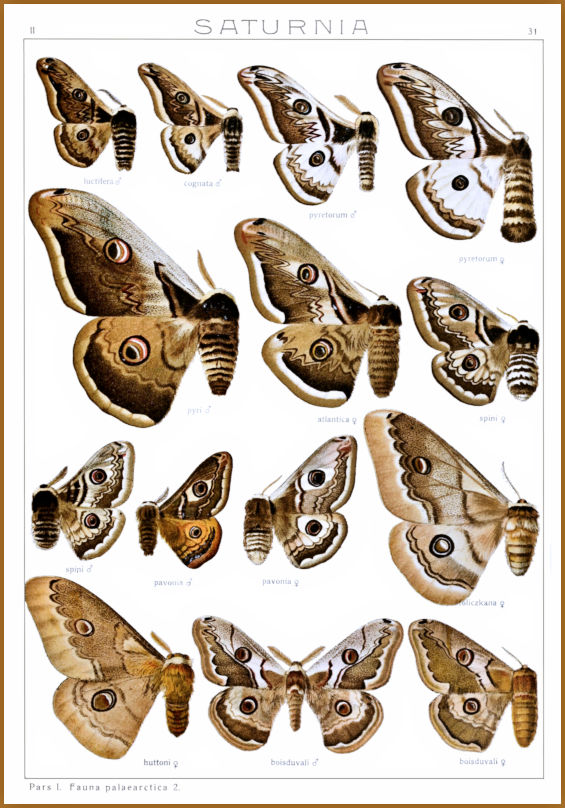
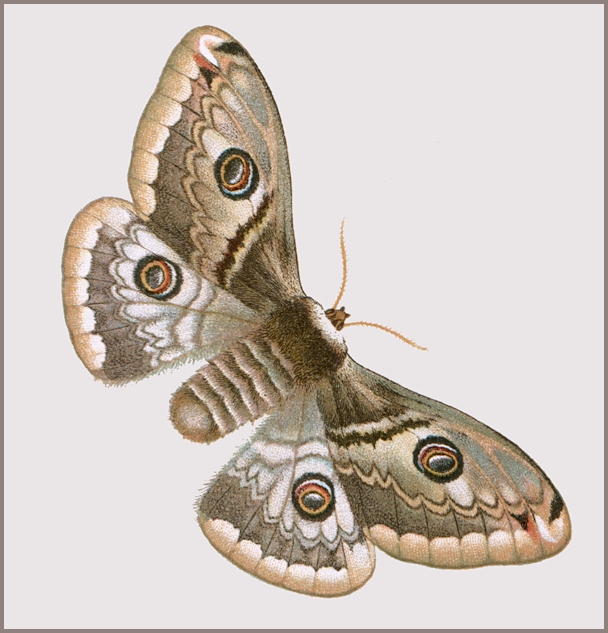
Holarctic; western Palaearctic region. Pleistocene refuge: Monocentric -- Pontomediterranean refuge.
Wingspan 55--100mm, with females being the larger. Both sexes resemble grey females of Saturnia pavonia, i.e. the adults are not sexually dichromatic.
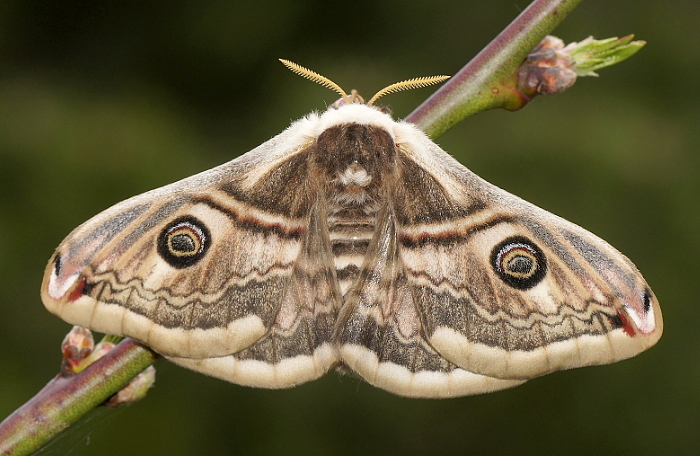
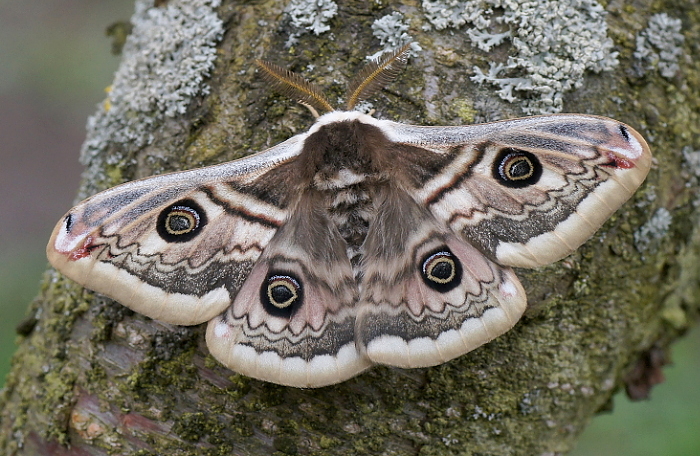
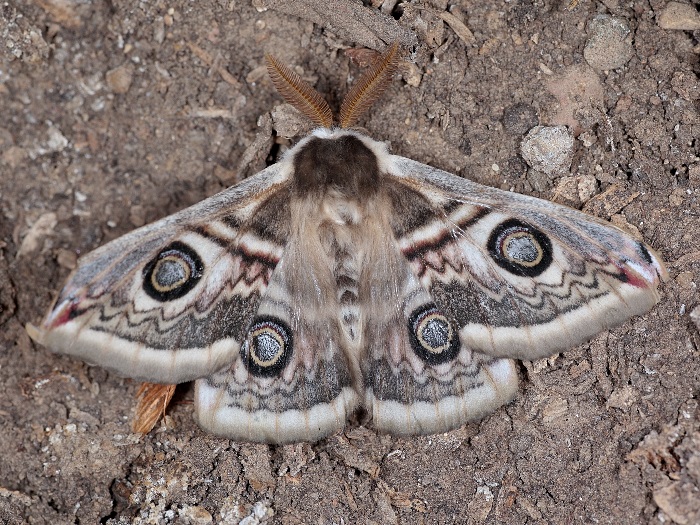
Unlike Saturnia pavonia, both sexes of this short-lived species are nocternal, with pairing taking place a few hours after midnight -- the couple stay together until the following evening (de Freina, 1979). It favours sunny, dry, bush-strewn steppe or semi-steppe, but can be found up to 1500m altitude in Turkey. A nomadic species whose colonies may shift from year to year. A member of the Pannonic steppe fauna which penetrates central Europe.
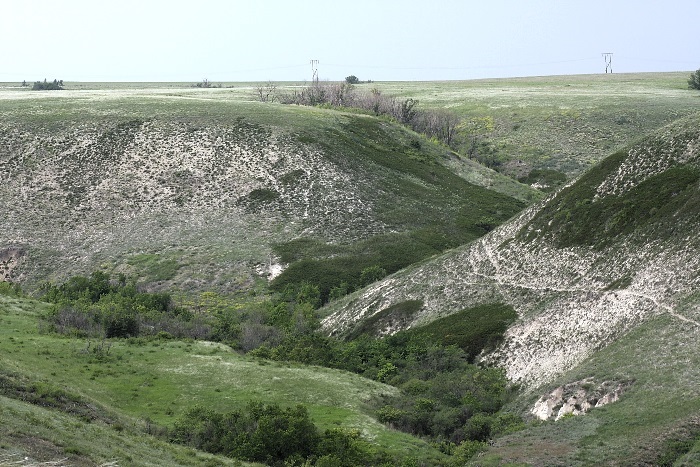

Depending on latitude and altitude, late March to early June as a single generation.
OVUM: Oval, 1.4 x 2.2mm, greyish-white with olive-brown gum. Laid in neat clusters around the peripheral twigs of the host, usually close to the ground, and may be densely covered with scales from the female abdomen. These hatch ten to fourteen days later.
LARVA: Full-fed 65--80mm. Monomorphic.
As in Saturnia pavonia, the newly-hatched, 2.5--3mm-long larvae consume part of their eggshells before clustering together. At this stage they are black and bristly. Unlike Saturnia pavonia, the larvae do not change colour as they grow and remain black, but with some fine grey and blue markings. However, a few may develop green blotches. The button-like tubercles become reddish-orange in the final instar.
The larvae are gregarious right up until the final instar, and can be conspicuous on their shrubby hosts.
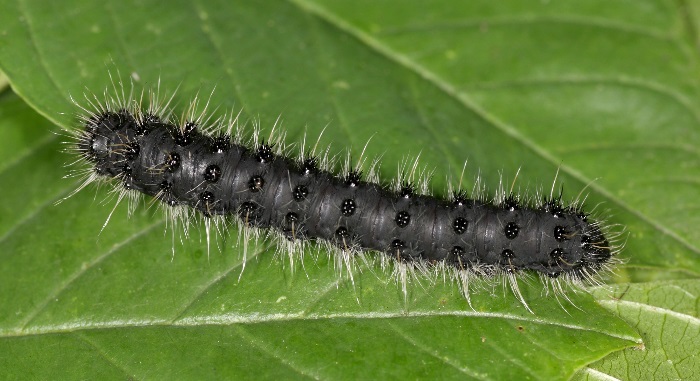
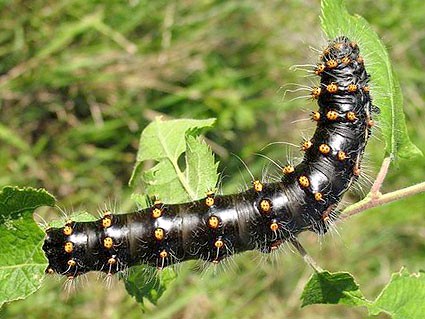
Hostplants. In Europe, polyphagous on Prunus (P. spinosa), wild roses (Rosa), hawthorns (Crataegus), elms (Ulmus), alders (Alnus), willows (Salix), poplars (Populus) and apples (Malus); however, in Turkey and the Crimea it shows a distinct preference for spiny members of the rose family (Rosaceae). In Turkey it has also been found on Sanguisorba officinalis (de Freina, 1994). Between Saratov and Volgograd (Russia) it is generally found on species of Rhamnus (Oleg Gorbunov, pers. comm. 2005).
PUPA: 26mm. Dark brown to black, noticeably dorso-ventrally flattened, and 'comma'-shaped. Formed in a coarse, thin-walled, pear-shaped, double, unsealed brown cocoon low down amongst the hostplant, often at ground-level or under stones. The overwintering stage. Very tolerant of dry conditions, and may remain as a pupa for several years.
Tachinidae: Blepharipa pratensis (Meigen, 1824), Exorista grandis (Zetterstedt, 1844), Exorista sorbillans (Wiedemann, 1830), Masicera pavoniae (Robineau-Desvoidy, 1830), Masicera silvatica (Fallén, 1810), Winthemia quadripustulata (Fabricius, 1794).
Formally, from eastern Austria, southern Poland and Slovakia across eastern and southeastern Europe to Macedonia (Krpach, Zeqiri, Abdija & Beadini, 2015), Bulgaria (Beshkov, 1995; Ádám Gór, iNaturalist 2013), Greece, Turkey (Staudinger, 1879; de Freina, 1979; Nässig, 1981; Kemal & Koçak, 2018), the Republic of Georgia and Armenia (Zolotuhin, Didmanidze & Petrov, 2011), the Ukraine (Khalaim, 2022), Crimea, southern Russia (Komarov, iNaturalist 2012) and western Kazakhstan. There are old reports of this species from the Altai Mountains (Lederer, 1853), as well as Bavaria (Germany) and northeastern Italy (Parenzan & Porcelli, 2006), but these require confirmation.
Care needs to be taken with records from eastern Turkey, the Republic of Georgia and Armenia as they could be of Saturnia cephalariae Christoph, 1885.
This species appears to have become extinct in Germany, Austria and Slovakia due to habitat destruction, and its status in Hungary is uncertain. It is also declining rapidly in the rest of Europe. Beshkov (1995) states for Bulgaria - "A common species in the beginning and in the middle of the [20th] century. In the last 40 years only single specimens of this very local species have been collected". However, it now appears to be on the increase again in this country (Beshkov & Langourov, 2004; Hristova & Beshkov, 2016). Khalaim (2022) states for the Ukraine - "There are no modern records of this species in the southern Ukraine. Probably the populations from the Odessa region are extinct".
Extra-limital range. None.
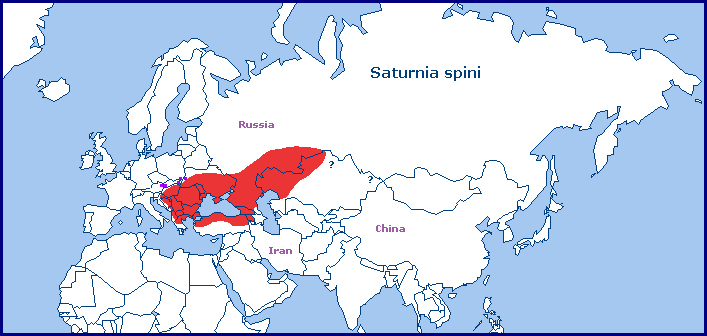
None, although the population from the Ukraine and southern Russia -- haversoni Watson, 1911 -- is sometimes accorded subspecific status. There is, however, some confusion as to the type locality of this race, which may be eastern Turkey (see Nässig, 1981).
 Return to species list
Return to species list